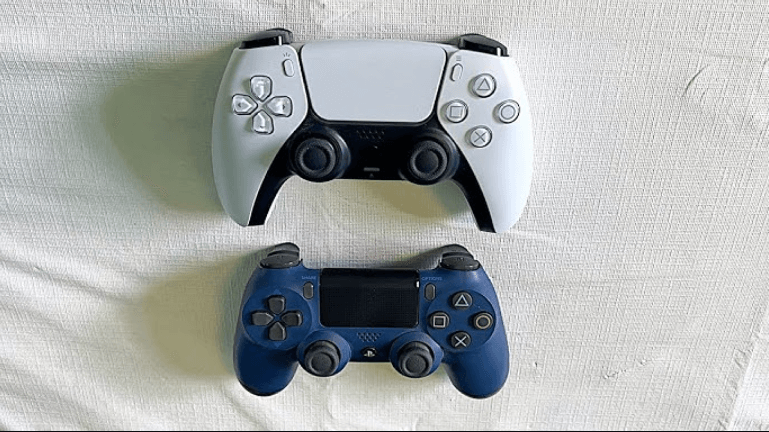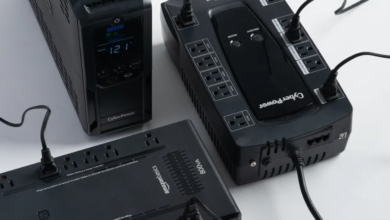The DualShock vs. DualSense Tester: Uncovering the Real Differences in Controller Hardware Quality

The jump from the PlayStation 4’s DualShock 4 (DS4) to the PlayStation 5’s DualSense was marketed as a sensory revolution—haptic feedback, adaptive triggers, and a new ergonomic design. But for the longevity-minded gamer, the biggest question remains: which one is built to last? While the DualSense offers an immersive experience, many veteran gamers swear by the old DualShock tester in hand, citing better long-term reliability. This guide moves past the marketing hype to provide an objective breakdown of the core controller hardware quality, diagnosing the true differences between the two peripherals. We will show you how to use a gamepad controller tester to expose the truth about stick drift, trigger wear, and overall durability.
I. The DualShock 4: A Reliable Foundation with a Potentiometer Flaw
The DS4 was a massive leap in ergonomics and functionality from previous PlayStation controllers, serving as a reliable standard for years. Its design is relatively simple, leading to fewer complex components that could fail.
A. DS4’s Strength: Simplicity and Proven Design
The primary strength of the DualShock 4 lies in its straightforward construction. Its buttons and analog triggers are simple mechanical switches and potentiometers, built using widely available and robust components. When issues did arise, they were usually predictable:
- R1/L1 button failure: Simple plastic fatigue from aggressive tapping.
- Worn rubber on thumbsticks: Easily replaceable cosmetic wear.
However, the core analog sticks, like most modern controllers, rely on potentiometers—variable resistors that use physical friction to measure input. This is the DS4’s ultimate weakness, making it susceptible to the inevitable controller failure known as stick drift after sustained use.
B. The Potentiometer Problem Persists
A quick look with a DualShock tester reveals that after heavy use, the potentiometers begin to send inaccurate data, even when the sticks are untouched. This issue is not unique to the DS4, but it defines its lifespan. Any comprehensive game controller test will show this drift long before the gamer feels it in-game.
See also: The Future of Cross-Border Marketing: Blending Culture and Technology
II. The DualSense Revolution: New Features, Same Stick Technology
The DualSense introduced game-changing technology, but under the hood, the most critical longevity component—the analog stick—remained largely unchanged in its fundamental design.
A. Hardware Overhaul (Excluding the Sticks)
The true hardware advancements in the DualSense are the Adaptive Triggers and the high-definition haptic motors.
- Adaptive Triggers: These use micro-gears and internal motors to provide variable tension and resistance, dramatically enhancing immersion. However, this complexity also introduces new failure points, making the adaptive triggers a potential concern for long-term controller durability.
- Haptic Motors: The sophisticated motors replace the old rumble packs, offering pinpoint vibration control.
B. The Critical Stick Hardware Reality
Despite the hype, teardowns and technical reports confirm that the DualSense analog sticks utilize the same base technology—potentiometers—as the DS4 and Xbox controllers. While there may be minor differences in the grade or specific manufacturer (Alps vs. others), the core design flaw of friction-based wear and tear remains. This means that, fundamentally, the analog stick lifespan of the DualSense is constrained by the same physical limitations that plagued its predecessor. This consistency in design makes using a controller tester vital for both generations.
III. Objective Diagnosis: Using a Controller Tester for Hardware Validation
When comparing the true controller hardware quality between the DualShock 4 and the DualSense, relying on in-game performance is misleading. Games use “dead zones” to filter out minor input errors. To see the raw truth, you need objective data.
A. The Limits of Console Calibration
Both PlayStation consoles offer minimal built-in controller diagnostics. They primarily confirm a successful pairing but do not provide granular, numerical data on stick centering, trigger range, or button health. A slight drift may be ignored by the console’s internal software, but that drift still exists and will eventually worsen.
B. The Essential Test: Accurate Raw Data with a Gamepad Controller Tester
The only way to definitively compare the pre-drift life cycle or post-repair accuracy of a DS4 versus a DualSense is through a specialized, independent diagnostic tool. This is where a universal gamepad controller tester becomes an indispensable resource for any gamer or technician.
Actionable Advice: To bypass console filters and view the unadulterated signals sent by the controller’s analog stick potentiometers, we recommend using a precise, independent gamepad controller tester tool. This tool allows you to:
- Directly compare drift: Place both a DualShock 4 and DualSense on a flat surface and watch the raw output data simultaneously. You can see which controller’s axes drift away from the true center (0.000) faster over time, giving you an objective measure of the difference in controller hardware quality.
- Verify Full Trigger Range: Confirm the analog triggers (especially the DualSense’s adaptive ones) are registering inputs across the entire 0 to 100% range without spiking.
- Check Haptic Interference: Perform a game controller test while the DualSense’s haptics are active to see if the vibration introduces noise or momentary drift into the analog stick signal.
This testing methodology provides a clear, quantitative basis for dualshock vs dualsense durability claims.
IV. Beyond the Sticks: Triggers, Batteries, and the Final Verdict
While the analog sticks share the same fundamental weakness, other components contribute heavily to the overall analog stick lifespan and user experience.
A. Triggers and Reliability
The DualSense’s adaptive triggers are a known potential point of controller failure. The complexity of the internal motors and gear systems means they can seize up or break more easily than the simpler mechanical springs used in the DS4’s triggers. If trigger immersion is less important than simple durability, the DS4 design holds an advantage due to its relative simplicity.
B. Battery Longevity and Repairability
The DualShock 4 generally has a longer functional battery life due to its less power-hungry features. However, both controllers feature batteries that degrade over time. The DualSense’s battery drain is often much faster due to the power demands of the haptic motors and adaptive triggers, leading to more frequent charge cycles, which shortens its overall effective lifespan compared to the DS4 under heavy use.
C. Which Controller Offers Better Long-Term Value?
When looking at the dualshock vs dualsense debate purely through the lens of hardware longevity:
- DS4: Wins on simplicity and predictable, less catastrophic failure modes (usually just stick drift).
- DualSense: Introduces new, complex points of failure (adaptive triggers) while retaining the primary analog stick lifespan limitation.
Therefore, the core technology flaw remains consistent across both generations, meaning the overall longevity of the sticks is comparable and relies heavily on user maintenance and gaming style.




